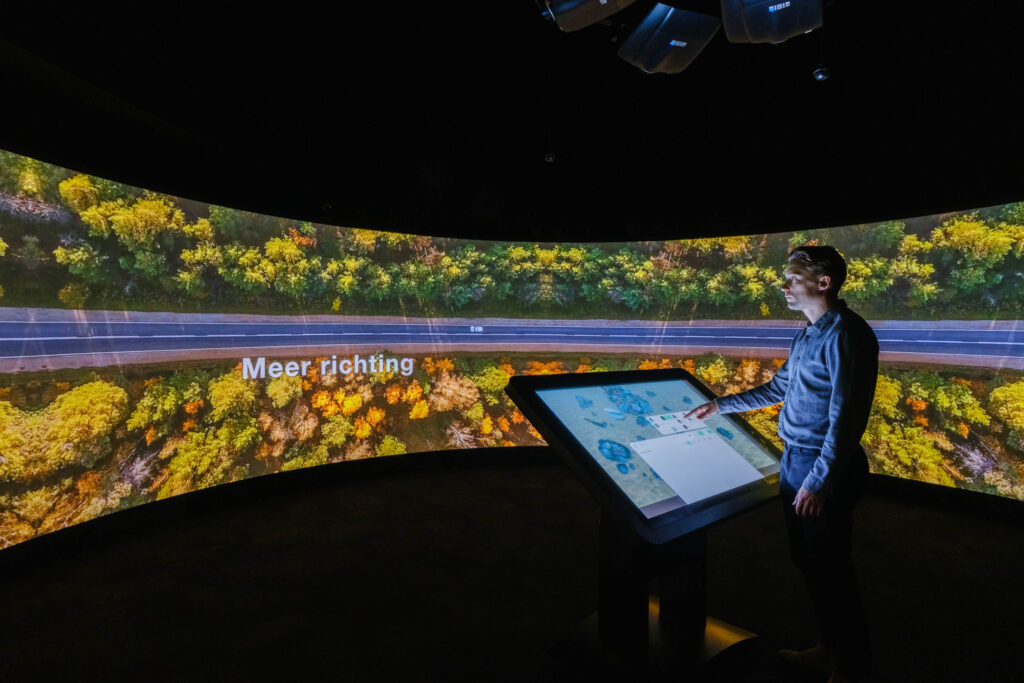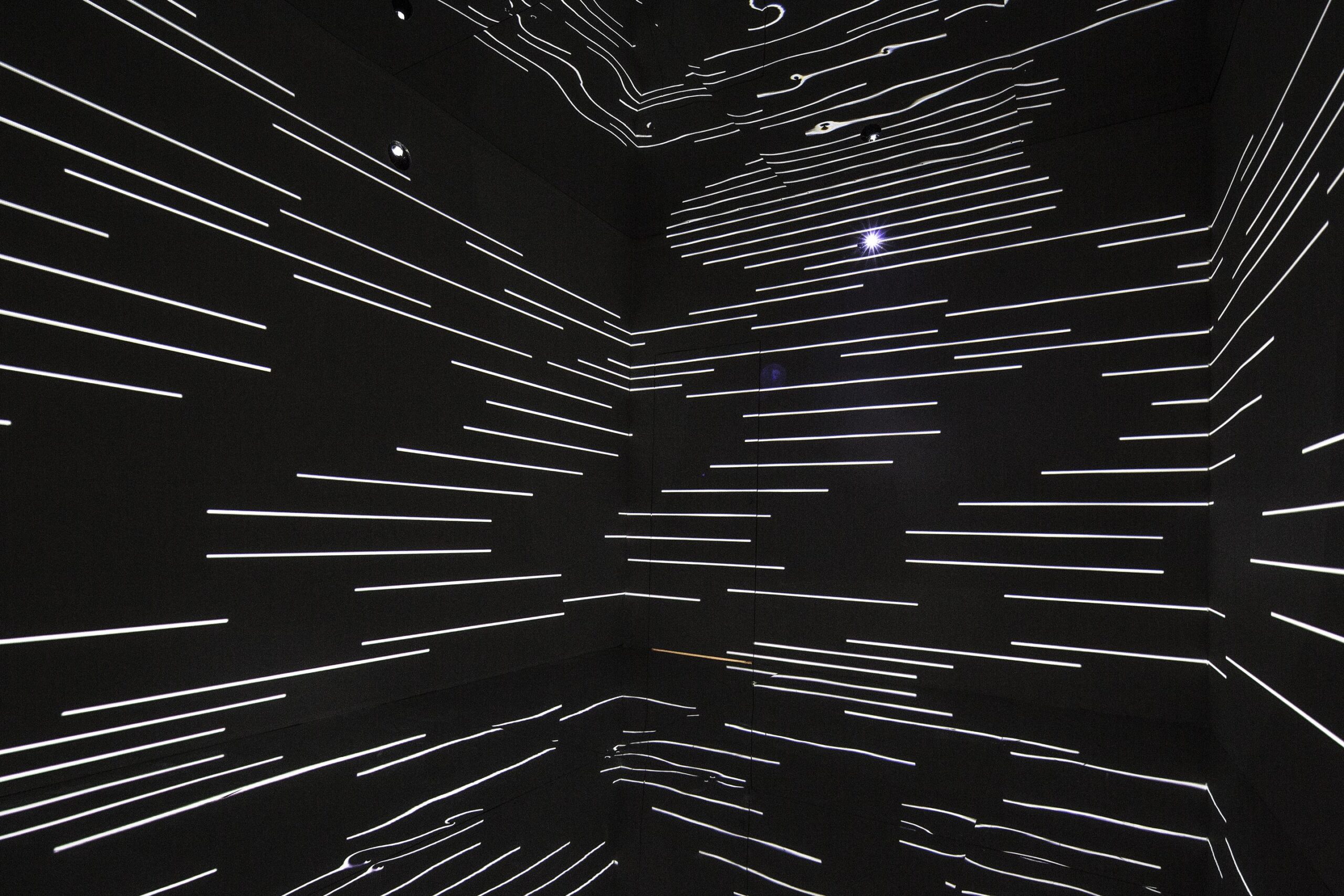
From full-blown 360-degree projection mapping & immersive experiences, has become an integral part of the creative and technological industries.
360-degree projection mapping, which creates a fully immersive experience that surrounds the viewer in your brands virtual dimensions by surrounding them on all sides.
In this post, we’ll explore the world of immersive projection mapping, from its definition to its applications and best practices.
What is 360-Degree Immersive Projection Mapping?
360-degree projection mapping is a technique that involves projecting images or video onto a spherical surface to create a fully immersive environment. Unlike traditional projection mapping, which is limited to flat or curved surfaces, 360-degree projection mapping allows for a truly 3D experience. This means that viewers can be surrounded by visuals on all sides, creating a truly immersive experience.
One of the most impressive examples of 360-degree projection mapping is the “Dream Cube” installation by NuFormer. In this installation, a large cube-shaped structure was created using projection screens on all sides. The resulting visual experience was a stunning mix of colors and shapes that enveloped the viewer on all sides.
Some notable Immersive Projection Mapping Events & Brand Activations
- Microsoft’s annual Worldwide Partner Conference (WPC) – Microsoft used projection mapping to transform the conference center into an immersive experience that showcased their products and services.
- Tesla Motors Showroom – Tesla’s showroom features projection mapping on the walls and floor, which helps to create a futuristic and engaging atmosphere for customers.
360-degree projection mapping has a wide range of applications across different industries. Here are some of the most common applications of the technology:
- Live Events: 360-degree projection mapping is used to create stunning visual displays at live events such as concerts, festivals, and conferences. The immersive experience created by 360-degree projection mapping can add an extra layer of excitement and engagement for attendees.
- Art Installations: Many artists are using 360-degree projection mapping is being to create immersive and interactive installations. This allows viewers to become a part of the artwork and experience it in a unique and memorable way.
- Brand Activations: 360-degree projection mapping can also be used in brand activations and marketing campaigns to create a unique and memorable experience for consumers. This can help brands to stand out in a crowded marketplace and create a lasting impression on potential customers.

Immersive Learning, Training & Development
Immersive Training: The United States Navy’s Virtual Ship Training (VST) – VST is an immersive training system that uses projection mapping to create a realistic environment for sailors to train on. The system was developed by Raytheon.
Interactive Learning: The Museum of the Bible – The Museum of the Bible in Washington D.C. uses projection mapping to create interactive exhibits that allow visitors to learn about the Bible’s history and impact. The projection mapping was done by S1T2.
Product Training: Audi Virtual Training – Audi uses projection mapping to create immersive product training experiences for their dealerships. The system was developed by VELVET.
Professional Development: The University of Central Florida’s Teaching Academy – The Teaching Academy at UCF uses projection mapping to create immersive learning environments for faculty to develop their teaching skills. The system was developed by ESI Design.
Skills Training: The National Training Center in Fort Irwin – The National Training Center uses projection mapping to create realistic training environments for soldiers to develop their skills in combat. The system was developed by Barco.
Employee Training: Walmart Academy – Walmart uses projection mapping to create immersive training experiences for their employees. The system was developed by AV Concepts.
Medical Training: The Arizona Simulation Technology and Education Center – The Arizona Simulation Technology and Education Center uses projection mapping to create immersive medical training scenarios for healthcare professionals. The system was developed by Trapezium.

Best Practices for 360-Degree Immersive Projection Mapping
Select the right equipment: Choosing the right projection equipment is critical to creating a successful 360-degree projection mapping experience. This includes selecting projectors that are capable of projecting on curved surfaces, as well as selecting the right lenses and optics to create a clear and sharp image.
Create content that is optimized for 360-degree projection mapping: Creating content that is optimized for 360-degree projection mapping requires a different approach than traditional 2D projection mapping. This includes designing content that can be viewed from multiple angles, as well as taking into account the curvature of the projection surface.
Pay attention to calibration and synchronization: One of the biggest challenges of 360-degree projection mapping is ensuring that the projection is properly calibrated and synchronized across all projectors. This requires careful planning and testing to ensure that the resulting visuals are seamless and free from distortion.
Consider the viewer experience: When creating a 360-degree projection mapping experience, it’s important to consider the viewer experience. This includes designing content that is engaging and interactive, as well as considering the physical space and layout of the installation

Conclusion
360-degree projection mapping is an exciting and innovative technology that has the potential to create truly immersive and unforgettable experiences for viewers. From live events to art installations and brand activations, 360-degree projection mapping has a wide range of applications across different industries. By following best practices such as selecting the right equipment, creating optimized content, paying attention to calibration and synchronization, and considering the viewer experience, it’s possible to create a successful and impactful 360-degree projection mapping experience.
As with any new technology, there are also potential challenges to consider when using 360-degree projection mapping. These can include the cost of equipment and resources, as well as the technical challenges of creating and implementing a seamless projection mapping experience. It’s important to weigh the potential benefits and challenges of 360-degree projection mapping before deciding whether it’s the right technology for a particular project or event.
We hope you now have a better understanding of the technology and its vast array of applications. From events and exhibitions to training and development, projection mapping has the power to create unforgettable experiences that leave a lasting impact. As the technology continues to evolve, we can only imagine what exciting new possibilities lie ahead. Stay up to date with the latest trends and advancements by subscribing to our newsletter for future updates.
